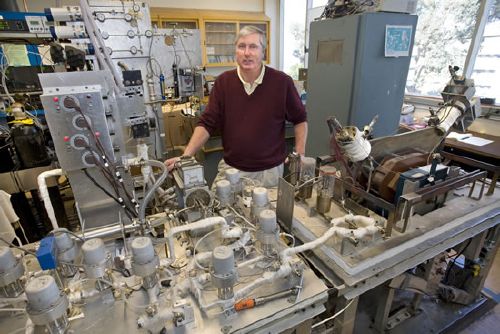
Photo Credit: Roy Kaltschmidt
Via Renewable Energy Access:
In a survey of the northern Basin and Range province of the western United States, geochemists Mack Kennedy of the Department of Energy’s Lawrence Berkeley National Laboratory and Matthijs van Soest of Arizona State University have discovered a new tool for identifying potential geothermal energy resources with no drilling required.
…
Kennedy and van Soest made their discovery by comparing the ratios of helium isotopes in samples gathered from wells, surface springs, and vents across the northern Basin and Range. Helium-three, whose nucleus has just one neutron, is made only in stars, and Earth’s mantle retains a high proportion of primordial helium-three (compared to the minuscule amount found in air) left over from the formation of the solar system. Earth’s crust, on the other hand, is rich in radioactive elements like uranium and thorium that decay by emitting alpha particles, which are helium-four nuclei. Thus a high ratio of helium-three to helium-four in a fluid sample indicates that much of the fluid came from the mantle.
High helium ratios are common in active volcanic regions, where mantle fluids intrude through the ductile boundary of the lower crust. But when Kennedy and van Soest found high ratios in places far from volcanism, they knew that mantle fluids must be penetrating the ductile boundary by other means.
…
“We have never seen such a clear correlation of surface geochemical signals with tectonic activity, nor have we ever been able to quantify deep permeability from surface measurements of any kind,” says Kennedy. The samples they collected on the surface gave the researchers a window into the structure of the rocks far below, with no need to drill.
As a company with a vested interest in the Basin and Range province and in alternate methods of geothermal resource assessment, this is a welcome breakthrough. The research paper describing the technique and results published by van Soest and Kennedy appears in Science is available to subscribers for review. If this method proves reliable, it could open a whole new round of geothermal exploration (and certainly will be used as another tool to assess current geothermal prospects.)
Tweet







